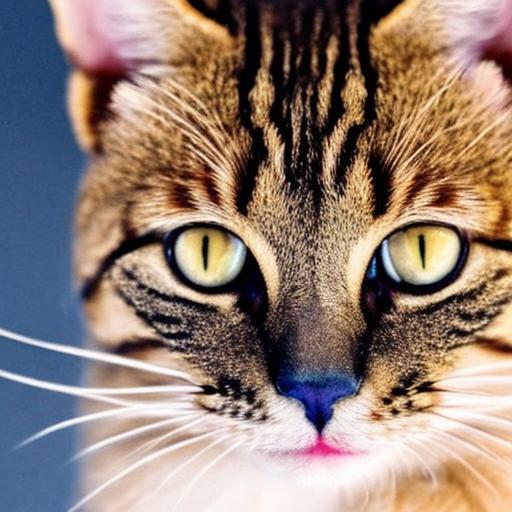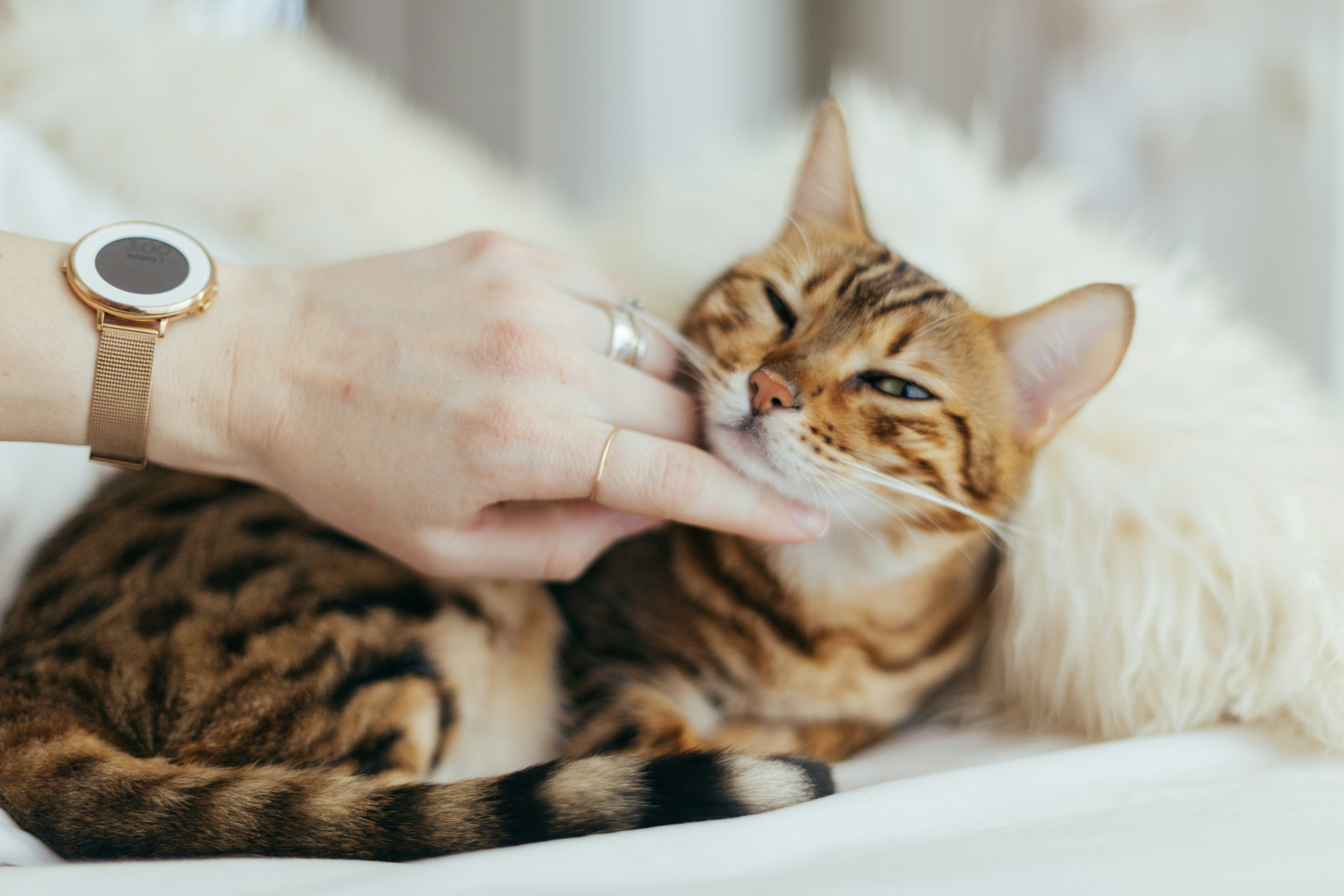Have you ever wondered why your feline companion seems to swipe at you whenever you casually stroll past? It can be quite puzzling, and perhaps even slightly hurtful when it happens. In this article, we will explore the underlying reasons behind this behavior, delving into the intricate world of feline communication and providing you with an empathic understanding of why your cat may be swiping at you when you walk by. So, let’s unravel the mysteries and gain valuable insights into our furry friends’ behavior.
Understanding Cat Behavior
Cats are incredibly fascinating creatures with complex behaviors. To better comprehend why a cat may swipe at you when you walk by, it is important to delve into their instinctual behaviors, body language, and territorial marking.
Instinctual Behaviors
Cats have a natural instinct to protect themselves and their territory. Swiping is a defensive behavior that stems from their innate need to defend themselves when they perceive a threat. This primal instinct is deeply ingrained in their DNA and can be triggered by various stimuli.
Body Language
A cat’s body language serves as a means of communication. Understanding their subtle cues can help unravel the mystery behind their swiping behavior. A flicking tail, flattened ears, dilated pupils, and a tense body posture are indicators of an agitated or anxious cat. These signs suggest that they may be feeling threatened, which can lead to defensive actions such as swiping.
Territorial Marking
Cats are territorial animals. They use scent glands on their paws to mark their turf, claiming it as their own. When a cat swipes at you, it could be a territorial response, particularly if you invade their personal space or encroach on an area they consider theirs. This territorial behavior serves as a warning to maintain your distance.
Possible Reasons for Swiping Behavior
Understanding the underlying reasons behind a cat’s swiping behavior is crucial in addressing and managing the issue effectively. Some common causes include fear or anxiety, lack of socialization, and redirected aggression.
Fear or Anxiety
Fear and anxiety can trigger defensive behaviors, including swiping. Cats may feel threatened by loud noises, sudden movements, or unfamiliar environments, leading them to lash out as a means of self-preservation. Identifying and removing potential stressors from their surroundings can significantly reduce their fearful responses.
Lack of Socialization
Cats that have not been adequately socialized as kittens may exhibit swiping behavior out of fear or uncertainty around people or other animals. Without proper exposure and positive interactions during their early developmental stages, they may resort to defensive actions when faced with unfamiliar situations. Gradual exposure to various stimuli and gentle handling can help alleviate their apprehension and reduce swiping tendencies.
Redirected Aggression
Redirected aggression occurs when a cat becomes aroused or agitated by one stimulus but vents their frustration on an unrelated target, such as a passerby. This behavior could manifest as sudden swiping towards a person who happened to be nearby during their aroused state. Identifying the triggers that evoke aggression and providing appropriate outlets for their energy can help mitigate such incidents.
Health-related Causes
Sometimes, swiping behavior can be a result of underlying health issues. It is important to consider potential pain or discomfort and sensory issues as contributing factors.
Pain or Discomfort
If a cat is experiencing physical pain or discomfort, they may lash out when touched or approached by recoiling and swiping. Pain from conditions such as arthritis, dental problems, or injuries can make them more sensitive to physical contact. Therefore, it is crucial to rule out any underlying medical concerns by consulting a veterinarian and addressing the pain appropriately.
Sensory Issues
Cats rely heavily on their senses to navigate the world around them. Issues with their vision, hearing, or smell can lead to heightened anxiety and defensive behaviors, such as swiping. Conditions like feline cognitive dysfunction or feline hyperesthesia syndrome can cause sensory sensitivity, making them more prone to displaying aggressive tendencies. A thorough examination by a veterinarian can help identify any sensory issues and guide in implementing appropriate management strategies.
Preventing or Managing Swiping Behavior
While it may not be possible to completely eliminate a cat’s swiping behavior, there are strategies that can help manage and reduce its frequency. Respecting their personal space, utilizing positive reinforcement, and providing outlets for their energy are key factors to consider.
Respect Personal Space
Cats value their personal space and may become defensive when they feel it is being invaded. Giving them the freedom to approach and interact on their terms can foster a sense of security and minimize their tendency to swipe. Avoid reaching out towards them abruptly or invading their hiding spots without invitation. By allowing them to set the boundaries, you establish trust and reduce the likelihood of aggressive reactions.
Positive Reinforcement
Rewarding desirable behaviors with praise, treats, or playtime can go a long way in shaping a cat’s response. Positive reinforcement can encourage them to associate pleasant experiences with interactions, gradually diminishing their inclination towards swiping. Acknowledge and reward them when they exhibit calm behavior or engage in play without aggression, reinforcing their understanding of appropriate responses.
Provide Outlets for Energy
Cats require mental and physical stimulation to keep them engaged and help release any pent-up energy. Providing interactive toys, scratching posts, and vertical spaces for climbing can redirect their focus and energy towards more appropriate outlets. Engaging in regular play sessions and providing environmental enrichment can help alleviate boredom, reducing the likelihood of swiping as a means of entertainment or frustration.
Seeking Professional Help
In some cases, swiping behavior may persist despite your best efforts. Consulting a veterinarian or an animal behaviorist can provide valuable insights and guidance in understanding your cat’s specific needs.
Consulting a Veterinarian or Animal Behaviorist
A veterinarian can perform a thorough examination to rule out any underlying medical conditions that may be contributing to your cat’s swiping behavior. They can also provide recommendations for managing any pain, discomfort, or sensory issues that may be exacerbating their defensive responses. If necessary, they may refer you to an animal behaviorist who can offer specialized behavior modification techniques tailored to your cat’s unique needs.
Importance of Patience and Consistency
Resolving swiping behavior requires patience and consistency in implementing appropriate strategies. It may take time for your cat to unlearn certain defensive habits and develop new, more positive behaviors. Being empathetic and understanding towards your cat’s individual journey will greatly contribute to their overall well-being and the success of behavior modification efforts.
Common Misconceptions about Swiping Behavior
To better address swiping behavior, it is important to dispel common misconceptions surrounding it.
It’s a Sign of Playfulness
Contrary to popular belief, swiping is not always indicative of playfulness. While kittens may engage in gentle swatting during play, swiping behavior in adult cats is usually driven by a sense of fear, anxiety, or a perceived threat. Recognizing the distinction between play behavior and defensive aggression is crucial in responding appropriately and providing the necessary support to your feline companion.
Cats are Intentionally Being Mean
Swiping should not be viewed as intentional meanness on the part of your cat. Their actions are rooted in their natural instincts and often serve as a protective mechanism. By understanding the underlying causes and providing a supportive environment, you can help your cat navigate their surroundings more comfortably and reduce their defensive responses.
Conclusion
When your cat swipes at you when you walk by, it is essential to approach the situation with empathy and understanding. By comprehending their instinctual behaviors, body language, and territorial marking, you can gain insights into their defensive actions. Identifying possible reasons such as fear, lack of socialization, and health-related causes can guide you in finding appropriate solutions. Implementing strategies like respecting personal space, utilizing positive reinforcement, and providing outlets for their energy can help manage and minimize swiping behaviors. If needed, seeking professional help from a veterinarian or animal behaviorist can provide further guidance. Remember, patience, consistency, and a compassionate approach are key in fostering a peaceful and harmonious relationship with your feline friend.




